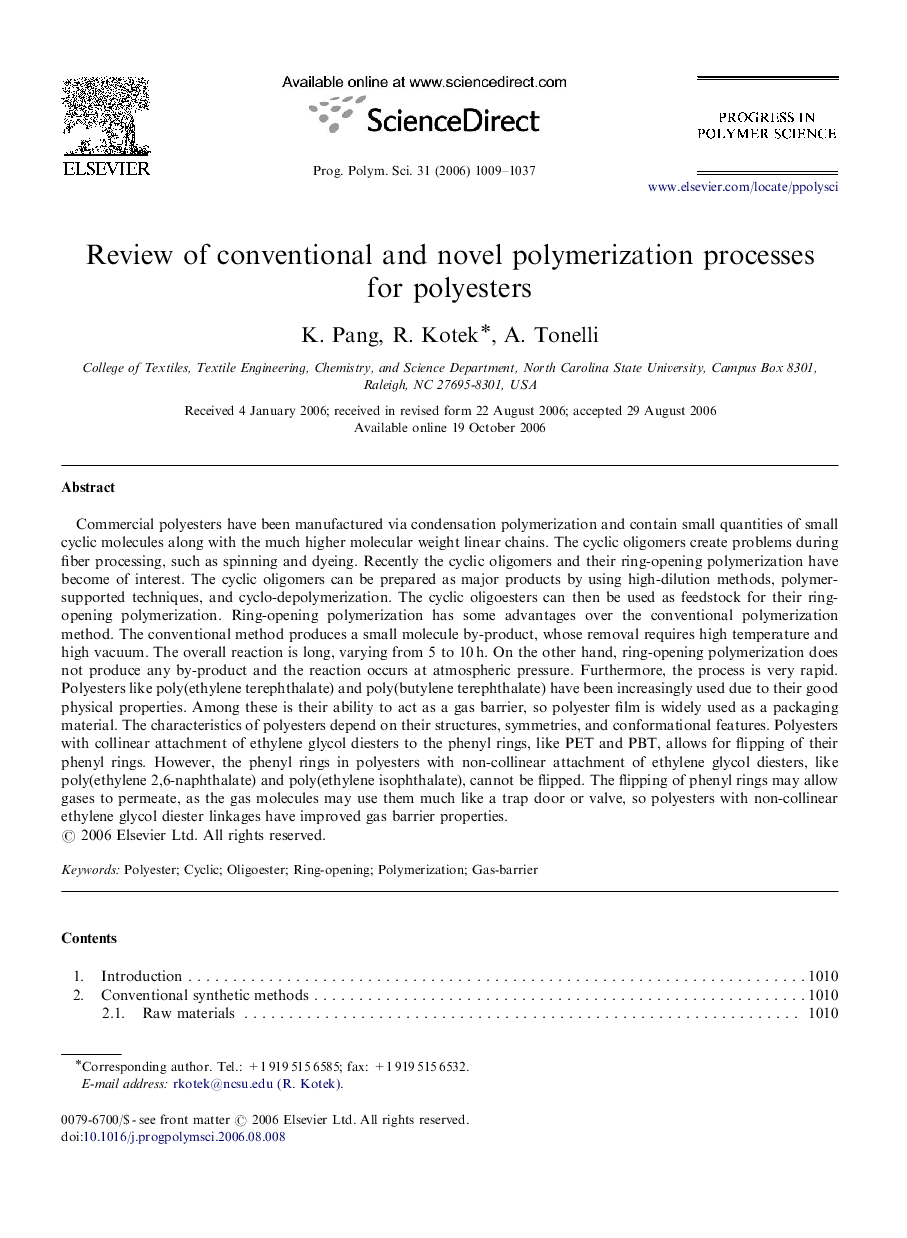| کد مقاله | کد نشریه | سال انتشار | مقاله انگلیسی | نسخه تمام متن |
|---|---|---|---|---|
| 5209127 | 1382663 | 2006 | 29 صفحه PDF | دانلود رایگان |
عنوان انگلیسی مقاله ISI
Review of conventional and novel polymerization processes for polyesters
دانلود مقاله + سفارش ترجمه
دانلود مقاله ISI انگلیسی
رایگان برای ایرانیان
کلمات کلیدی
موضوعات مرتبط
مهندسی و علوم پایه
شیمی
شیمی آلی
پیش نمایش صفحه اول مقاله

چکیده انگلیسی
Commercial polyesters have been manufactured via condensation polymerization and contain small quantities of small cyclic molecules along with the much higher molecular weight linear chains. The cyclic oligomers create problems during fiber processing, such as spinning and dyeing. Recently the cyclic oligomers and their ring-opening polymerization have become of interest. The cyclic oligomers can be prepared as major products by using high-dilution methods, polymer-supported techniques, and cyclo-depolymerization. The cyclic oligoesters can then be used as feedstock for their ring-opening polymerization. Ring-opening polymerization has some advantages over the conventional polymerization method. The conventional method produces a small molecule by-product, whose removal requires high temperature and high vacuum. The overall reaction is long, varying from 5 to 10Â h. On the other hand, ring-opening polymerization does not produce any by-product and the reaction occurs at atmospheric pressure. Furthermore, the process is very rapid. Polyesters like poly(ethylene terephthalate) and poly(butylene terephthalate) have been increasingly used due to their good physical properties. Among these is their ability to act as a gas barrier, so polyester film is widely used as a packaging material. The characteristics of polyesters depend on their structures, symmetries, and conformational features. Polyesters with collinear attachment of ethylene glycol diesters to the phenyl rings, like PET and PBT, allows for flipping of their phenyl rings. However, the phenyl rings in polyesters with non-collinear attachment of ethylene glycol diesters, like poly(ethylene 2,6-naphthalate) and poly(ethylene isophthalate), cannot be flipped. The flipping of phenyl rings may allow gases to permeate, as the gas molecules may use them much like a trap door or valve, so polyesters with non-collinear ethylene glycol diester linkages have improved gas barrier properties.
ناشر
Database: Elsevier - ScienceDirect (ساینس دایرکت)
Journal: Progress in Polymer Science - Volume 31, Issue 11, November 2006, Pages 1009-1037
Journal: Progress in Polymer Science - Volume 31, Issue 11, November 2006, Pages 1009-1037
نویسندگان
K. Pang, R. Kotek, A. Tonelli,